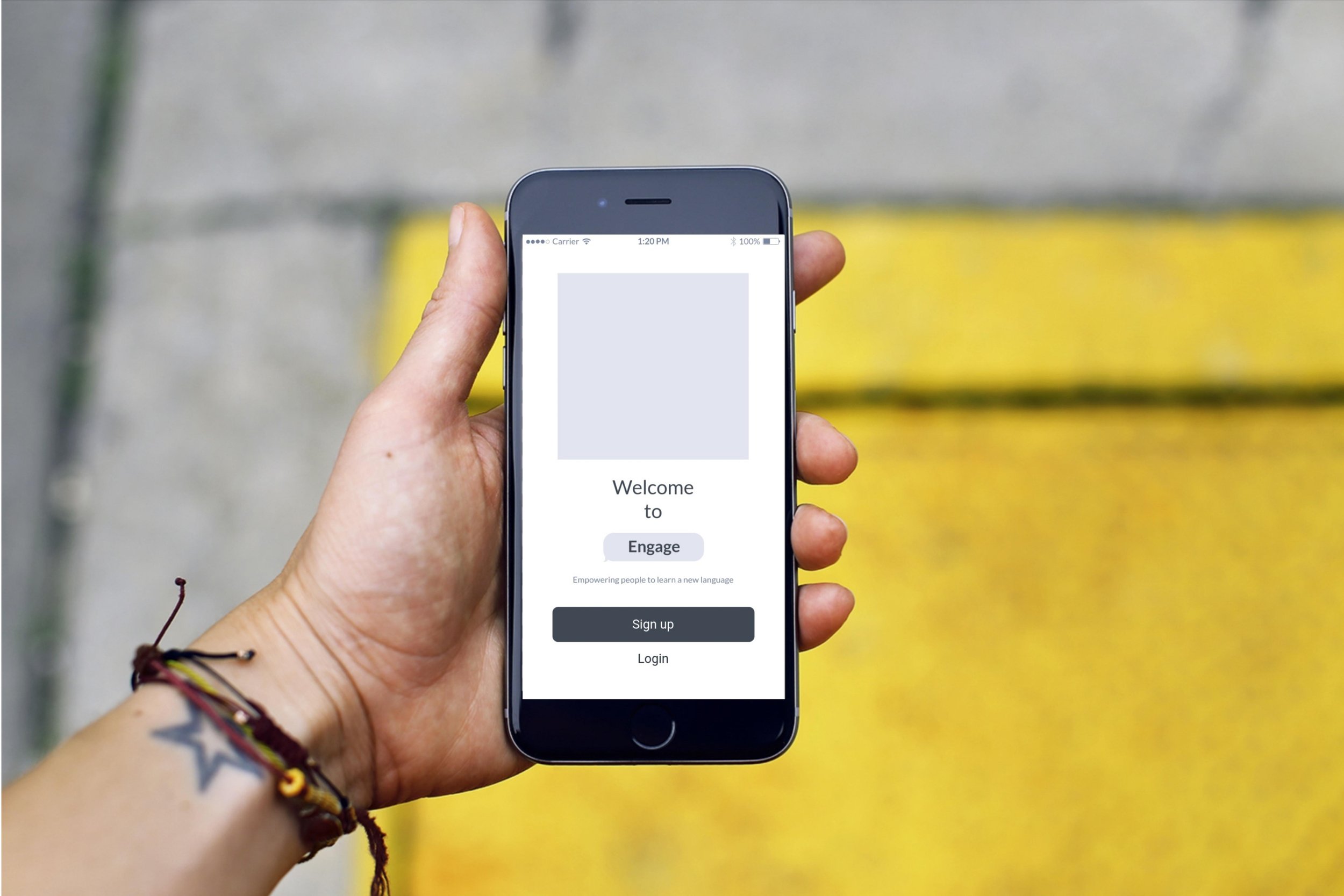
Overview
Engage is a new mobile app that helps users converse with others in a foreign language. With offline mode, you can learn on the tube or plane, Learn with an AI, or upload a conversation.
The Challenge
How to design a mobile app that empowers people to learn a new language on the move.
The Goal
We believe that by creating an app that includes conversing methods and quiz like questions for Luke on the move we will achieve better success rate on learning a new vocabulary and completing sections of the tasks.
The Process
Exploring possible competitors and analysing their features with a pros and cons. Conducting user interviews and learning some interesting pain points my users were facing. Grouping these insights allowed me to propose a user persona with their goals and needs. This took me to potential user stores and into user flows for the information architecture. This gave some ideas on the functionality and possible layout of the low-fidelity wireframes. Once in the prototyping stage, this pointed out some potential questions from the usability testing stages and where the app was responsive enough.
Industry
Education
My Role
UX/UI Designer
Project Scale
1 Month
Tools Used
Zoom, Descript, Pen & paper, Figma, Marvel
Competitive Analysis
Three apps were analysed in detail. Two of the apps (Rosetta Stone and Duo Lingo) were visually tasteful and professional, making me trust the app more with being able to learn a language. I enjoyed the simple layout of buttons on the Duo Lingo app. The biggest influence was the texting bubble feature in the Babbel app - this I thought was different and lots of ideas started to evolve when I saw this feature.
User Interviews
Being able to use the app offline, on the tube or plane.
I find order to improve your language you have someone to speak with regularly.
‘I think it takes so long to learn a new language and even longer to converse with someone. It’s far simpler to learn the words but bringing it all together is hard.’
If you made the wrong answer to the question it would be repeated again and again which is great for a dyslexic person.
User Personas
The results from the user interviews helped with the needs and goals of the persona. I found it useful organising the different insights into different sections. Understanding their behaviours, was insightful on how the Engage app would be different and tackle some of these pain points.
Information Architecture
The user stories focused on the user’s pain points and desires.
I decided to focus the user flows on some of the key requirements the app needs, as well as new features the user might suit them in their situation.
Wireframing & Prototyping
Following on from the key requirements the app will have, from low-fidelity wireframes of initial ideas to prototyping on how the app will function and features work. I used the text bubbles that I was influenced by in the competitive analysis and the simple text boxes from the Babbel app.
Usability Testing
F
Improvements
Most of these improvements are down to having little experience within the UX design field, as this was the time doing this process, so they were basic improvements, using the right type of language, etc.
Summary
Seeing as this was my first UX design project and I was learning these methodologies along the way I think I did a pretty good job. It was really interesting to learn the insights from the user interviews and analysing the data, although it took longer than I thought, to transcribe the video into text. The initial pen-to-paper wireframes were hard to translate all the information into a visual layout for the first time. Especially whether it was the correct way to go and was answering my user’s pain points. Once into digital format, allowed me to visualise how these user flows might function in an app and how the user might interact with the CTA buttons etc. The further I progressed, the further it all started to come together. Especially once I did the usability testing of the prototype, as this made clear some basic improvements that were more about interaction rather than testing whether the app played up to solving the problem.
Moving forward I would like to further develop the prototype into a high fidelity and do another usability test focusing more on whether the app has solved the problem.






